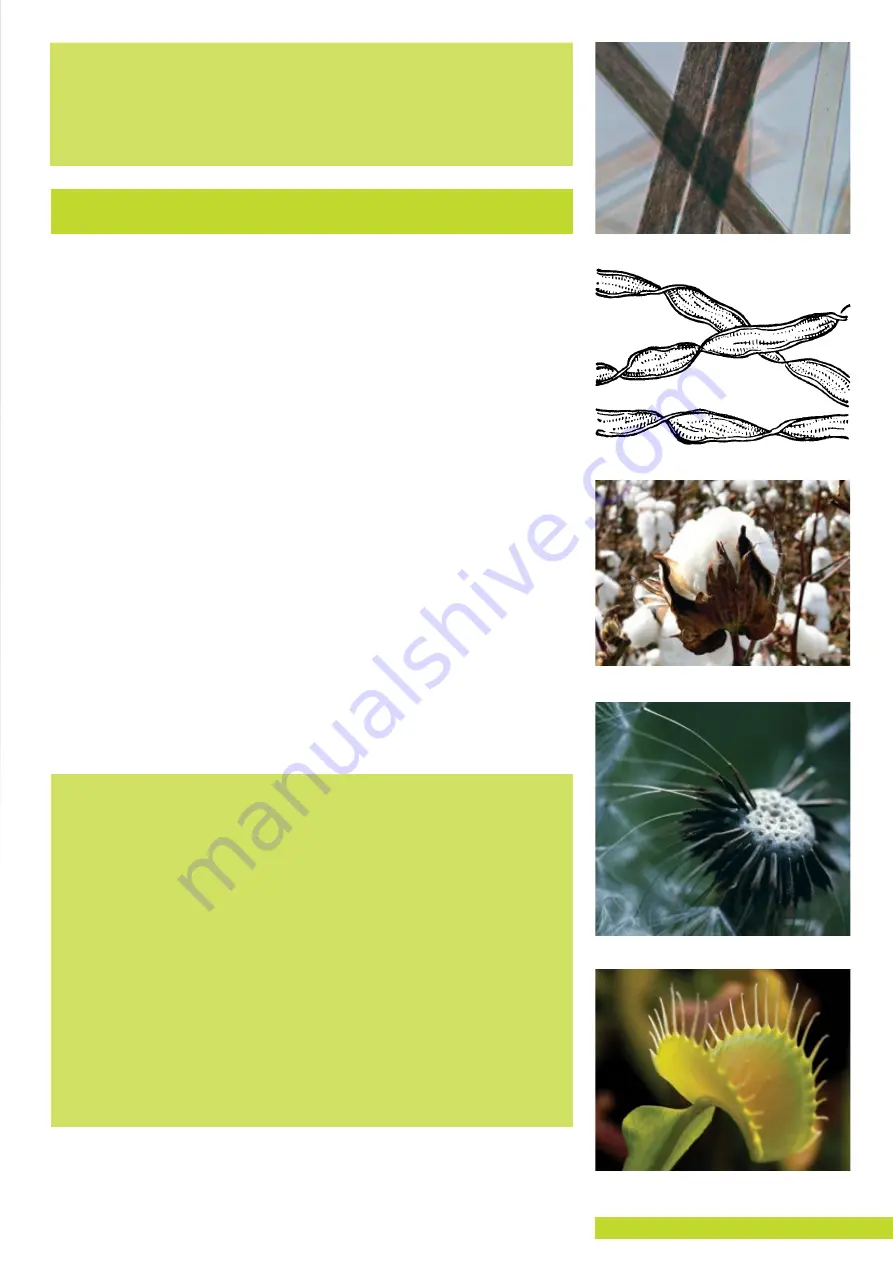
When You Have Itchy Fingers…
Preparing a nettle hair for viewing is not difficult. You will need:
• a slide and a cover slip
• the pipette and water
• a razor blade (see page 11)
• the tweezers
• garden gloves or thin leather gloves
• a piece of the stalk of a stinging nettle
In order to avoid getting stung by the hairs while you’re trying to observe
them under the microscope, it’s best that you wear garden gloves at first. The
stinging hairs of the nettle can be seen readily with the naked eye on the
stalk. Carefully cut off a few hairs from the base and transfer them to a drop
of water on the slide. During preparation, a few hairs may break off on the
base or at the tip. So use this tried-and-true method: Place several hairs under
the cover slip at the same time, so you are more likely to have a perfect speci-
men in the bunch. Now observe your preparation at different magnifications
and compare them with the image on the next page.
You can also make a quiz with your friends or family. Prepare lots of different
objects ranging from cat hair to human hair, from artificial fibers to a couple
of fibers from a cotton bag to plant hairs from leaves or fruits. Now, it’s up to
the others to try to match the microscopic images of the hairs to the objects of
their origin. If you’d like, you can even think up a mystery story involving your
objects that the participants have to solve.
Plant Hairs
Even the invention of innumerable synthetic fibers for the clothing industry has
not been able to replace cotton to this day. It currently comprises about 44% of
the entire textile consumption in the world. Almost everyone wears this pure plant
product every day. But have you ever given any thought to why the cotton plant
forms its 6 inch-long fibers?
Plants have a wealth of strategies for distributing their descendants. The more
widely the fruits and seeds can be spread, the higher the chance of populating a
place that’s not already overgrown. The hairs of the cotton plant are seed hairs
that serve as flight organs. So it’s the wind that ensures that the descendants of
a cotton plant are scattered to the four winds — literally. Many plants propagate
their seeds using the wind.
But plant hairs are capable of lots more. Many plants with white leaves have a
thick fuzz on their surface made of dead hairs which reflect the light of the sun. In
this way, those plants prevent their leaves from heating up too much.
Also, flesh-eating plants, such as the venus flytrap, have tactile hairs. When an
insect touches one of these hairs, the trap falls shut.
Stinging nettles have especially ingeniously constructed hairs. The stinging hairs
operate on a simple but clever principle. The hair is shaped like a pipette — and
works like one too. On the lower part, the hair thickens to a bubble, gets thinner
and thinner toward the top, and is finally topped off with a round little head at
the tip. Directly underneath this head, the cell wall is particularly thin and, due to
the deposition of certain substances, quite fragile. This location serves as a break-
ing point. When you come into contact with a nettle hair, the tip breaks off imme-
diately. Left behind is a sharp, hollow needle that can easily bore through the skin.
What’s more, there is slight overpressure in the nettle hair before the tip is broken
off, so the stinging and itchy contents are injected under the skin. So the stinging
nettle has a great weapon against predators and others who would trample it.
Human hairs
Cotton fibers
Fruit capsule of a cotton plant with fringe hairs
Fruits of the dandelion
Venus flytrap — an insect-catching plant
47
Summary of Contents for TK2 Scope
Page 1: ...Experiment Manual ...
Page 52: ......



































